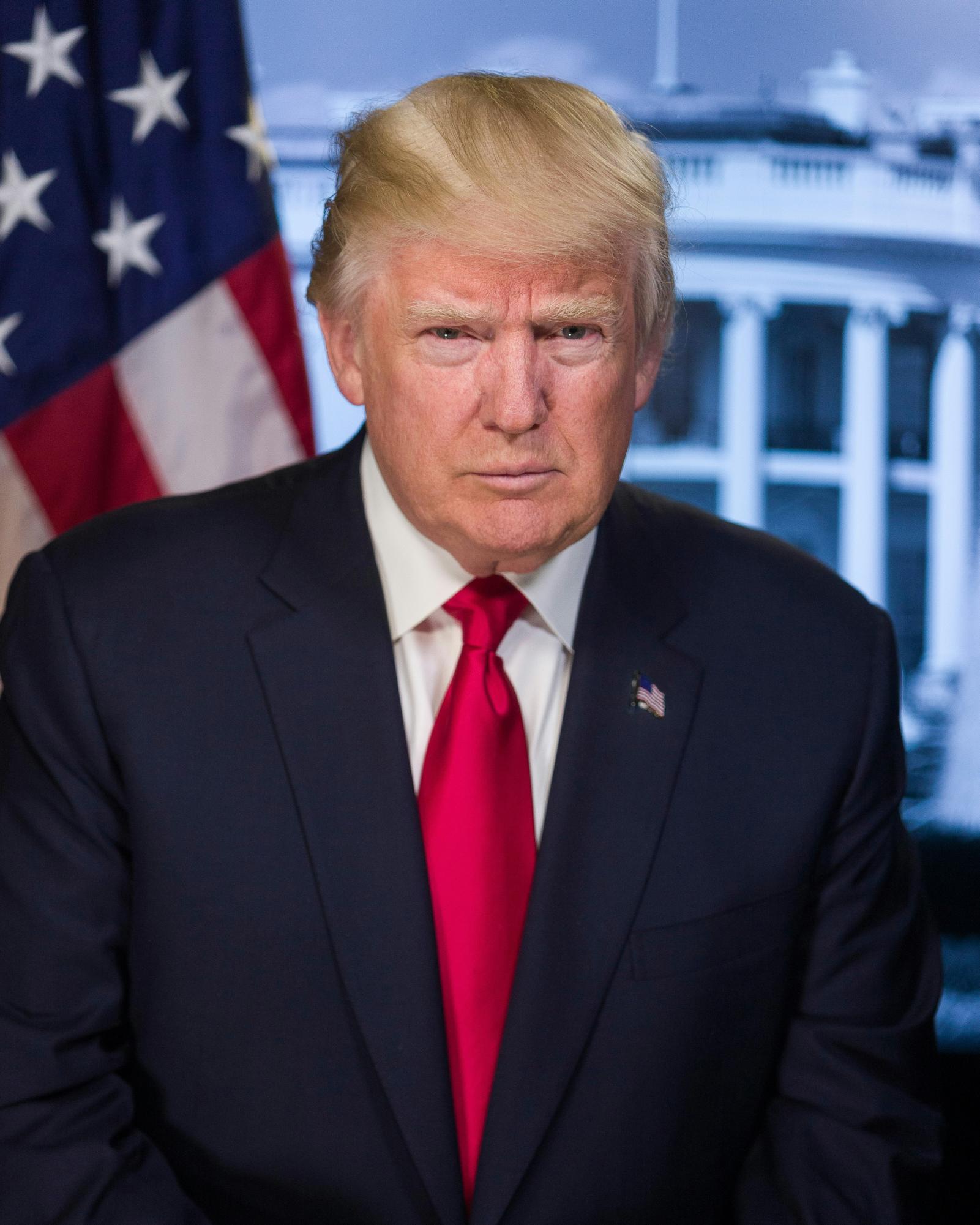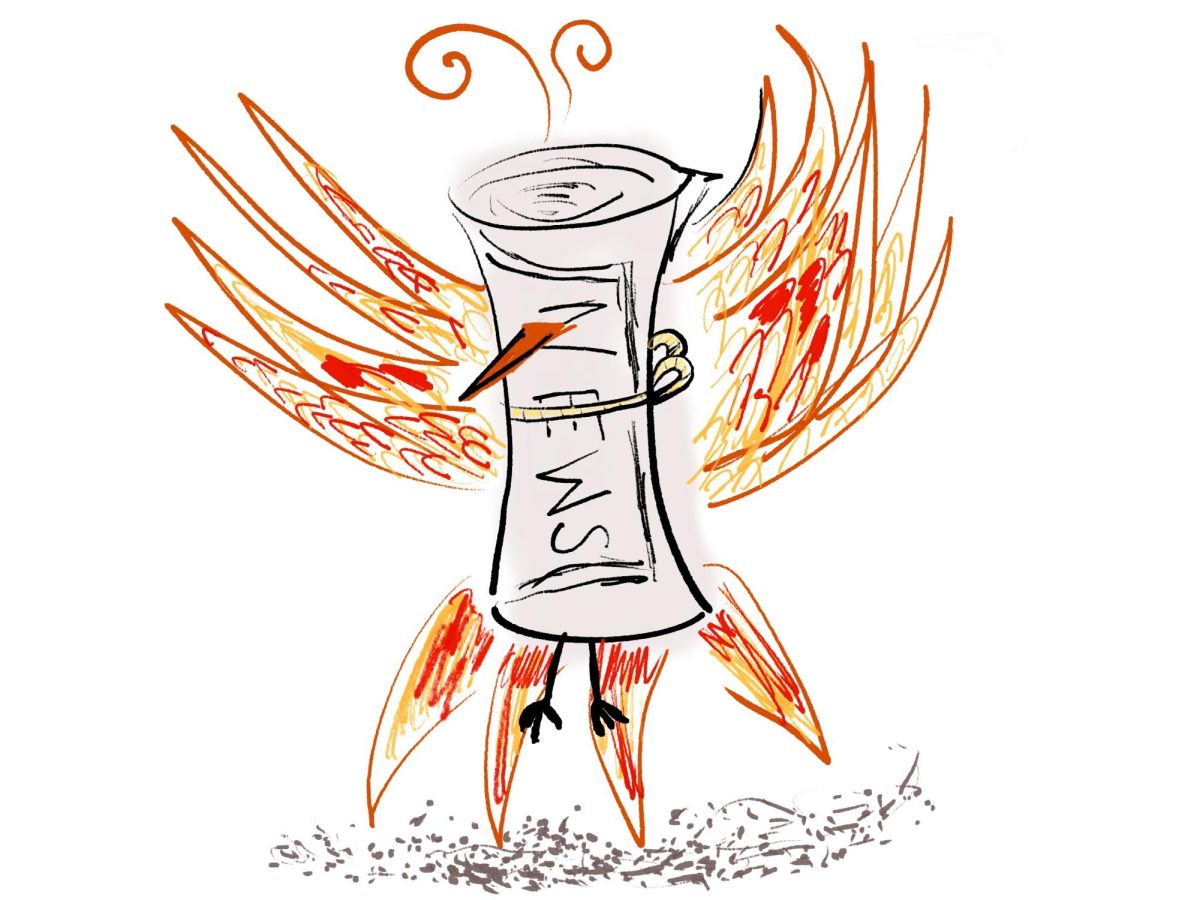“When I win, I will immediately bring [egg] prices down, starting on day one!” — Leading up to last November’s presidential election, Donald Trump’s campaign promise echoed through Mar-a-Lago and the nation as a whole. Running on a campaign of economic nationalism reminiscent of his 2016 win, Trump used the rising egg prices to bring attention to his promise of a revitalized and independent American economy.
Yet his first three months as president have seemingly done the opposite, with the price of eggs rising 15.2% in January and 10.4% in February, according to the Consumer Price Index (CPI). Trump posted a link to an article titled “Shut Up About Egg Prices ― Trump Is Saving Consumers Millions,” in which avid right-winger Charlie Kirk blames former President Joe Biden’s administration for the escalating egg prices. He cites Biden’s intentional killing of possibly Bird Flu infected hens – which was in accordance with federal law and international precedent – as the primary cause for the continued rise in egg prices.
Kirk’s stance echoes the current administration on not only egg prices, but the economy as a whole. According to MSNBC, during a March 12th briefing, Press Secretary Karoline Leavitt blamed the Biden administration for the current economic situation. However, Chief economist of the Economic Policy Institute Josh Bivens refuted this claim, stating that Trump has inherited the “unquestionably… strongest economy for an incoming administration since the George W. Bush administration.”
Regardless, American consumers are feeling skeptical of Trump’s economy right now. The University of Michigan Consumer Sentiment Index (CSI) has fallen an estimated 20.5% (14.7 points) since Trump’s inauguration — a decline that has never been seen in the first three months of a presidency during the 73 years that the index has been active.
A large part of why the CSI has fallen so much is because of Trump’s seemingly erratic economic policy, both domestic and foreign. His tariffs, proposed tax cuts, and focus on AI have left the American people uncertain and critical.
Here’s my take on Trump’s biggest economic moves in the past three months, graded from -10.0 to +10.0:
Tariffs (Pre-Liberation Day): Rating of -7.5
A tariff is a tax imposed by a government on goods and services imported from another country. This tax increases the cost of the imported items, making them less competitive compared to domestically produced goods. Ultimately, though, the additional cost is often borne by the consumers rather than foreign nations. Governments utilize tariffs to generate revenue, protect domestic industries from foreign competition, and influence trade policies.
The Trump administration has implemented significant tariff measures during their short tenure. However, these policies have been implemented chaotically at best, Trump often choosing to threaten and rescind or delay more often than execute.
For example, according to ReedSmith’s Trump Tariff Tracker, Trump has threatened eight global tariffs at rates of 25% or higher, yet before April 2nd he only had two in effect, 25% on steel and 25% on aluminum. In addition, he has threatened to tariff 12 total specific countries/bodies, of which only a quarter have actually received any sort of tariff. Despite his inconsistent delivery, the market still swings wildly with every announced tariff. When he declared a 25% tariff on Mexican and Canadian imports, the S&P dropped 1.8% and the Nasdaq by 2.6%.
Of the tariffs that Trump has actually gone through with, the trade war with Canada was at the forefront. On March 6th, Trump issued a 10% tariff on Mexican and Canadian energy, a 10% tariff on Mexican and Canadian potash (a potassium-based fertilizer that is highly regarded and used for its ability to increase plant disease resistance and increase plant yield) , and a 25% tariff on every other Mexican and Canadian good that is not under the United-States-Mexico-Canada agreement (USMNCA), which ensures that certain goods remain duty free — according to Trump, this is “To combat the extraordinary threat to U.S. national security… [and] our public health posed by unchecked drug trafficking.”
He has also threatened to raise tariffs on Canadian dairy products and lumber to 250% by April 2nd, though he has yet to follow through.
In addition, Trump declared that he would raise the tariff on Canadian steel and aluminum to 50%, a bold move considering that Canada is America’s largest source of iron, steel and aluminum. In fact, Canadian-exported aluminum was 41% of America’s aluminum import, and Canadian iron and steel were a quarter of their respective areas. The Canadian government responded by implementing a 25% energy supercharge for US customers in New York, Minnesota, and Michigan. Cited by CNN, Ontario Premier Doug Ford estimated that this supercharge would raise “utility bills by $100 a month” for affected customers. Trump later backed down from these threats.
Remember the only two global tariffs that Trump had passed pre-liberation day? Those were a result of Trump losing this economic altercation. He agreed to lower his steel and aluminum tariff back down to 25% and make them global rather than exclusively directed at Canada.
While the Canadian trade war was the focal point of Trump’s tariffs around this time, there were some honorable mentions. He placed a 20% tariff on all Chinese and Hong-Kong products, he threatened a 200% tariff on EU alcohol products, and he threatened a 100% tariff on all products coming out of BRICS countries – an informal group of emerging economies consisting of Brazil, Russia, India, China, South Africa that aims to foster economic growth, political cohesion, and global influence.
All together, Trump’s pre-liberation day tariffs have been undoubtedly negative, with the Tax Foundation estimating that they will reduce the long-run Gross Domestic Product (GDP) by 0.2% and the capital stock (value of productive assets) by 0.1%. A study by the US-China Business Council further concluded that the US lost 245,000 jobs as a direct result of Trump’s tariffs. His wanton threats, unnecessary trade wars and absurd escalations warrant this policy a -7.5.
Liberation Day Tariffs: -9.0
On April 2, 2025, Trump declared his Liberation Day Tariffs. Claiming that they are a “declaration of economic independence,” Trump, using his emergency national powers, announced a baseline 10% tariff for all goods coming into the United States, and higher “reciprocal” tariffs on countries that have an alleged high trading deficit with the United States.
According to the Center for Strategic and International Studies, analyst’s expectations were that the liberation day tariffs would be in accordance with the global standard for setting tariffs, following the Harmonized System which contains over 5,000 categories and detailed classifications up to 10 digits. They also believed that the administrations would take into account “non-tariff barriers such as regulatory hurdles, opaque licensing regimes, and other behind-the-border restrictions.”
Instead, the Trump administration decided to apply what they learned in third grade math and opted to use the formula “2 x Reciprocal tariff percentage = Trade deficit ÷ (Imports x ε x φ)” where ε is equal to -4, the assumed elasticity of US import demand, and φ is equal to 0.25, the assumed rate of tariffs to prices.
Now, because 0.25 x 4 = 1, this math simplifies down to “2 x Reciprocal tariff percentage = Trade deficit ÷ US imports from country.” This rudimentary approach to international trade not only fails to achieve its goal of reciprocating other country’s trade restrictions, but also punishes countries that the US mass imports goods from, such as Viet, Thai, and Bangladeshi clothing.
Following these announcements, on April 9th 2025, JP Morgan became the first major bank to throw in the towel. CEO of JP Morgan Jamie Dimon stated that recession is a “likely outcome,” given Trump’s sweeping tariffs. This is a claim that has been largely avoided by major entities, with news publications even going so far as to refer to recession as the “r-word” in order to avoid spreading panic. On a side note this has resulted in some funny headlines like “R-Word Fears Send Stock Market Much Lower” from Zacks, a finance publication.
Tax Reforms: Rating of -6.0
The Trump administration’s proposed tax reforms include extending his 2017 Tax Cuts and Job Acts (TCJA), expanding the State and Local tax deduction, and lowering corporate tax, among other policies. He aims to stimulate the economy by increasing disposable income and encouraging investment. However, these reforms – especially the TCJA – have sparked debates about their long term implications.
The Center on Budget and Policy Priorities (CBPP) notes that tax reforms like Trump’s often lead to significant reductions in federal revenue. Specifically, the Committee for a Responsible Federal Budget, a nonpartisan publication that reports on economics, estimates that these tax cuts will reduce federal revenue by between $5 trillion and $11.2 trillion dollars over the course of 10 years. They also project that the national debt will be boosted to “between 132% and 149% of GDP by 2035, if not offset, compared to nearly 100 percent today and 118 percent under current law.” This can impact the funding for essential public services, raising questions about the sustainability of public services or other areas of government spending.
In addition, the CBPP notes that these kinds of tax reforms benefit higher-income individuals more than the middle and working class, raising further concerns about growing income inequality.
For example, corporations have been among the primary beneficiaries of tax cuts, particularly due to the reduction in the corporate tax from 35% to 21% by the TCJA. This decrease was intended to boost investment, economic growth, and worker wages.
However, the Center for American Progress (CAP) notes that the promised benefits for workers did not materialize. Instead, in a cited study conducted by the Joint Committee on Taxation and the Federal Reserve Board, the CAP reported that “earnings do not change for workers in the bottom 90% of the within-firm distribution, but do increase for workers in the top 10%, and increase particularly sharply for firm managers and executives.” In addition, the CAP study also found that the “executive pay hikes were only weakly correlated with sales, profits, or sales growth.”
What these two facts tell us is that Trump’s tax reforms do not assist in corporate growth, and instead directly feed into the rich get richer scheme already present in the U.S.. That isn’t to say the middle- and low- income classes didn’t benefit at all from the tax cuts, but their benefits were lackluster when compared to those received by the upper-class.
Furthermore, JP Morgan finds that certain industries that happen to be among Trump’s favorites benefit from these tax provisions disproportionately. The most noticeable example of this is the Foreign-Derived Intangible Income (FDII) provision of the TCJA. The FDII was part of Trump’s America First economic policy; it reduced the tax on income made from exporting goods and services out of the U.S., encouraging companies to keep their high-cost operations and intangible assets – like patents or trademarks – within U.S. borders rather than in low-tax countries like the Bahamas.
While the FDII has been moderately successful in keeping companies domestic, a common criticism is its intense favoritism of the manufacturing and tech sectors — sectors historically championed by Trump. These sectors, according to JP Morgan, make up 66% and 16% of total deduction claims filed under the FDII, respectively. JP Morgan also finds that essential sectors, such as finance, health care, education, and other services, received “little benefit” and were neglected by Trump.
In fact, certain industries like the healthcare industry were weakened by Trump and the TCJA, which repealed the Affordable Healthcare Act’s (ACA) requirement that Americans citizens need to have healthcare/health insurance. This led to higher premiums and fewer people signing up for health insurance, driving up costs within the industry and reducing the number of insured individuals. Which, in turn contributed to higher consumer spending in an already inflating market, exacerbating inflationary pressures and eroding the healthcare industry’s integrity.
Overall, Trump’s tax cut policy seems to operate under the guise of helping the common man, while in reality the wealthy elite reap the majority of the upsides. These cuts drastically favors sectors that Trump himself supports, a dangerous trend in today’s mixed economy where every sector matters. Although they do burn a hole in the nation’s wallet, they aren’t as harmful as his tariffs are. So while the policy is definitely harmful to the American people, its lack of direct market impact saves it from getting a score lower than -6.
AI initiative: Rating of +5.0
In January 2025, Trump signed Executive Order 14179, titled “Removing Barriers to American Leadership in Artificial Intelligence.” This order revokes previous policies which Trump deemed to be obstacles to AI innovation — policies which required the sharing of safety test data and risk management during development, generally un-doing Biden era AI guidelines — aiming to raise and continue the U.S.’ position in the AI landscape.
Following this, on February 6th, the White House Office of Science & Technology Policy (OSTP) released a Request for Information form to get public input on the AI Action Plan. This plan is intended to outline strategic actions that the government will take to maintain US AI dominance, emphasizing economic competitiveness and national security.
Furthermore, in a significant move to bolster American AI, the administration announced a private-sector investment of up to $500 billion for AI infrastructure development. This initiative, which involves tech giants like OpenAI, SoftBank, and Oracle, aims to build data centers and create over 100,000 jobs in the U.S., reinforcing the nation’s AI strength.
However, these policy shifts have drawn in concerns. The American Civil Liberties Union (ACLU) criticized Trump’s efforts to dismantle existing AI protections, arguing that these laws ensured that “AI tools follow existing laws protecting civil rights and civil liberties” and that they “accurately perform the tasks they’re given and don’t waste…resources.” The ACLU claims that “there’s no reason for the Trump administration to jettison those protections,” stating that it serves to increase the workforce harms that AI can cause and exemplify the influence that Big Tech has on the new administration.
All things considered, Trump’s AI policy pursuing American dominance in such a fast growing and important industry is applaudable, however the good that this policy could bring is shadowed by the stripping of ethical considerations and protections, capping its rating at a +5.









